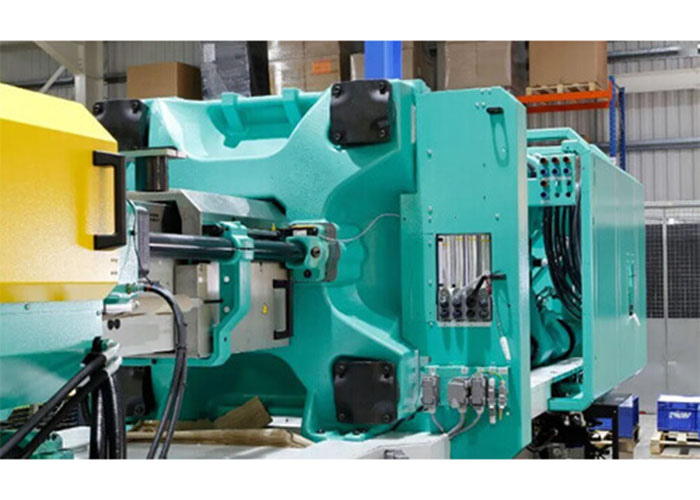
After the read this article, you will know how mold temperature affects quality control of injection molded parts.
How a mold temperature affects quality control of injection molded parts?
The mold temperature refers to the surface temperature of the cavity in contact with the product during the injection molding process. Because it directly affects the cooling rate of the product in the mold cavity, it has a great influence on the internal performance and appearance quality of the product.
Mold temperature affects quality control of injection molded parts on product appearance
Higher temperature can improve the fluidity of the resin, so that the surface of the part is usually smooth and shiny, especially to improve the surface aesthetics of the glass fiber reinforced resin part. It also improves the strength and appearance of the fusion line.
For the etched surface, if the mold temperature is low, the melt is difficult to fill the root of the texture, which makes the surface of the product appear shiny, and the true texture of the injection mold surface cannot be transferred. After raising the mold temperature and the material temperature, Make the surface of the product get the ideal to etch effect.
Mold temperature affects quality control of injection molded parts on internal stress of products
The formation of internal stress in molding is basically caused by different thermal shrinkage rates during cooling. When the product is molded, it is cooling gradually extends from the surface to the inside. The surface shrinks and hardens first, then gradually to the inside. In the process, due to shrinkage The difference between fast and slow causes internal stress.
When the residual internal stress in the plastic part is higher than the elastic limit of the resin, or under the erosion of a certain chemical environment, the surface of the plastic part will crack. Studies on PC and PMMA transparent resins show that the residual internal stress is in the compressed form on the surface layer and the stretched form in the inner layer.
The surface compressive stress depends on the surface cooling condition. The cold mold rapidly cools the molten resin, resulting in higher residual internal stress in the injection-molded product. Mold temperature is the most basic condition for controlling internal stress.
A slight change in mold temperature will greatly change its residual internal stress. In general, the acceptable internal stress of each product and resin has its lowest mold temperature limit. When forming thin walls or longer flow distances, the mold temperature should be higher than the minimum for general injection molding.
Mold temperature affects quality control of injection molded parts to improve product warpage
If the cooling system of the injection mold is not designed properly or the temperature of the injection mold is not properly controlled, insufficient cooling of the plastic molded parts will cause the warpage and deformation of the plastic molded parts.
For the temperature control of the injection mold, the temperature difference between the male mold and the female mold, the core and the mold wall, the mold wall and the insert should be determined according to the structural characteristics of the product, so as to control the difference in the cooling and shrinking speed of each part of the mold.
After demoulding, it tends to bend in the direction of higher temperature to compensate for the difference in orientation shrinkage and prevent the plastic parts from warping and deforming according to the orientation law.
For plastic parts with a completely symmetrical body structure, the mold temperature should be kept consistent, so that the cooling of each part of the plastic molded parts is balanced.
Mold temperature affects quality control of injection molded parts on shrinkage of products
The low mold temperature accelerates the freezing orientation of the molecules, which increases the thickness of the frozen layer of the melt in the injection mold cavity. At the same time, the low mold temperature hinders the growth of crystals, thereby reducing the molding shrinkage of the product.
On the contrary, if the mold temperature is high, the melt cools slowly, the relaxation time is long, the orientation level is low, and it is conducive to crystallization, and the actual shrinkage of the product is large.
Mold temperature affects quality control of injection molded parts on the heat distortion temperature of the product
Especially for crystalline plastics, if the product is molded at a lower mold temperature, the molecular orientation and crystallization are instantly frozen.
When a higher temperature environment or secondary processing conditions are used, the molecular chains will be partially rearranged. And the crystallization process makes the product deform even under the material’s heat distortion temperature (HDT).
The correct approach is to use the recommended mold temperature close to its crystallization temperature so that the product is fully crystallized during the injection molding stage to avoid such post-crystallization and post-shrinkage in high-temperature environments.
In short, mold temperature is one of the most basic control parameters in the injection molding process, and it is also the primary consideration in injection mold design. Its impact on the forming, secondary processing, and final use of the product cannot be underestimated.
You may also be interested in the below articles:
Summary Of 50 Injection Mold Structure Operation Dynamic Diagrams



